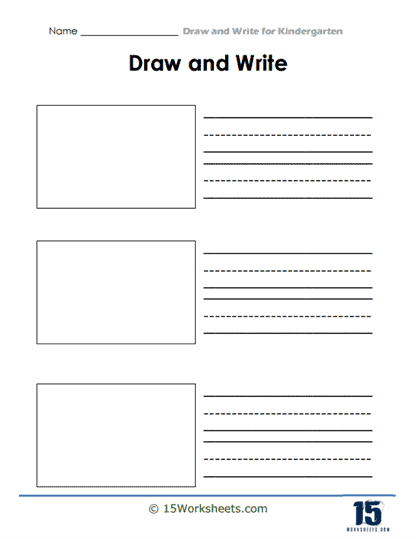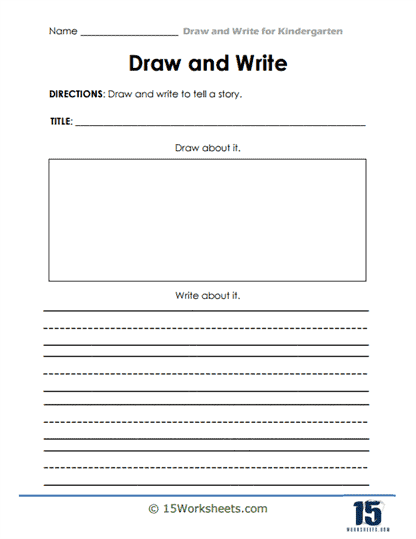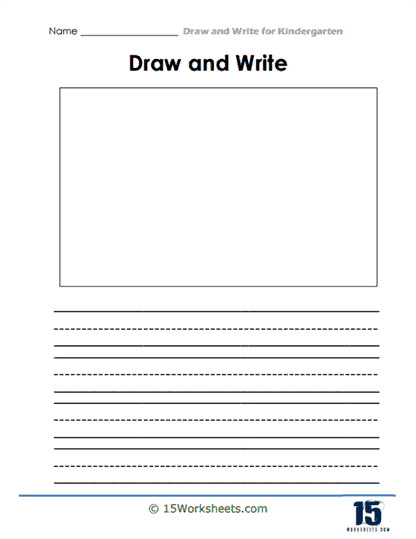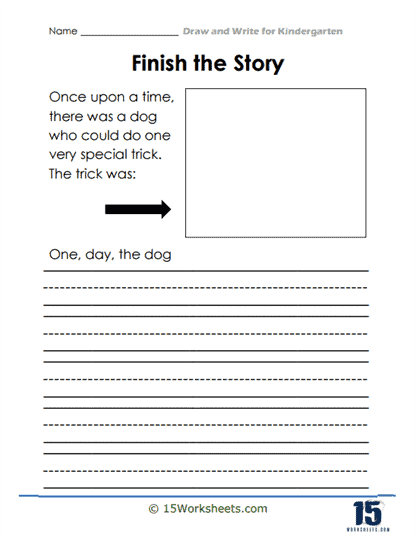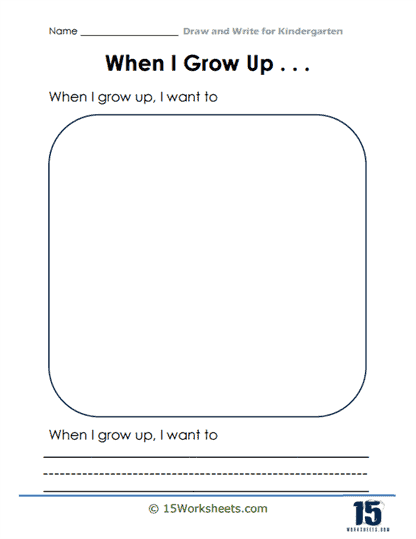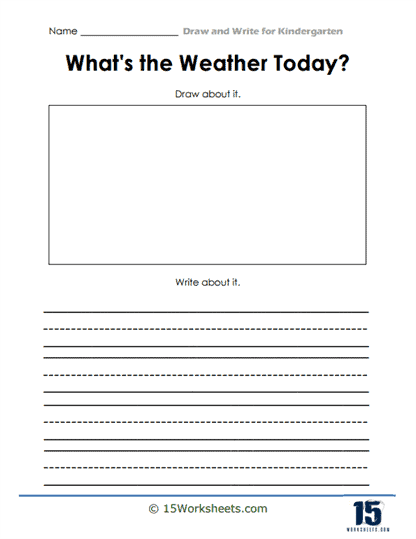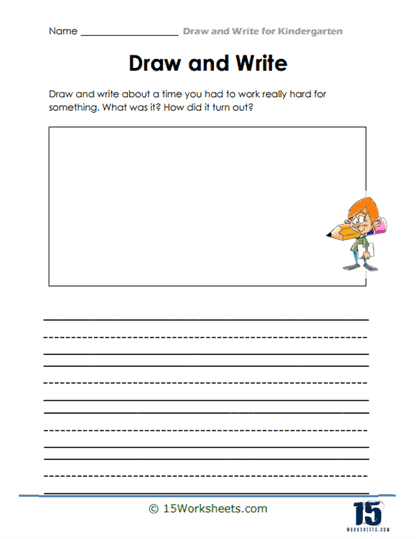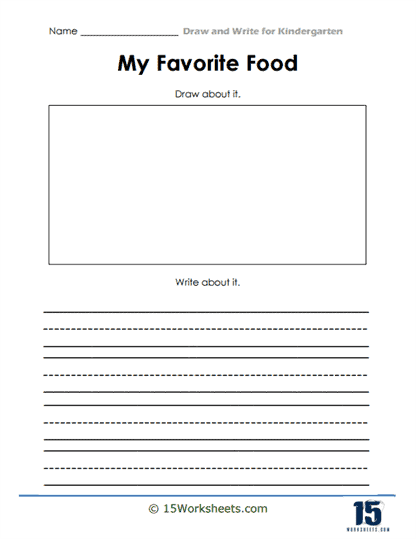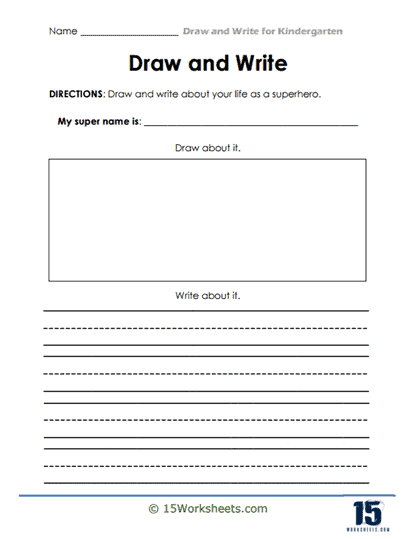Draw and Write Worksheets
About These 15 Worksheets
These worksheets are sheets that have space for you to draw a picture and lines for you to write something about that picture. It’s like creating your own little storybook on a single page!
Now, you might wonder, “What should I draw and write about?” Well, that’s the best part! You can be creative and choose what to draw and write. Sometimes, the worksheet might give you a theme or a prompt. For example, it could say, “Draw and write about your favorite day,” or “Draw and write about a time when you helped someone.” Other times, you’re free to choose your own adventure!
Here are some simple steps:
Step 1) Read the Prompt – If there’s a prompt, read it carefully. Understand what it’s asking you to draw and write about.
Step 2) Plan Your Story – Think about what you want to draw and the story you want to tell. Remember, every story has a beginning, middle, and end.
Step 3) Draw Your Picture – Now, it’s time to put your artist hat on. Draw a picture based on your plan. Use colors, shapes, and details to make your picture exciting and interesting.
Step 4) Write Your Story – Next, put your writer hat on. Write a few sentences or a small paragraph about your picture. Remember to use details from your drawing in your writing. Make sure your story makes sense and is fun to read.
Step 5) Review and Edit – Look at your work. Does your story match your picture? Have you spelled all the words correctly? Is your handwriting neat? If not, make some edits.
So, how does doing these “Draw and Write” worksheets help you improve your language arts skills?
Promotes Creativity – Drawing and writing together allows you to use your imagination to create unique stories. This boosts your creativity, which is an important part of writing.
Improves Writing Skills – When you write about your picture, you practice your writing skills, such as organizing your thoughts, using proper grammar, and spelling words correctly.
Enhances Vocabulary – As you try to describe your picture, you’ll use different words. This helps you learn and practice new words, expanding your vocabulary.
Strengthens Comprehension – When you create a drawing and then write a story about it, you’re making connections between visual information (your drawing) and written information (your story). This helps improve your comprehension skills.
Develops Fine Motor Skills – Drawing and writing require control of your hand and fingers, which helps develop your fine motor skills. These are important for tasks like writing, typing, and using tools.
Boosts Confidence – When you create your own stories, it can make you feel proud and confident. This can motivate you to keep practicing and improving your language arts skills.
In the end, “Draw and Write” worksheets are a wonderful blend of art and storytelling. They let your imagination soar while helping you learn and practice important skills. So, the next time you work on a “Draw and Write” worksheet, remember – you’re not just drawing and writing, you’re creating your own amazing story!





